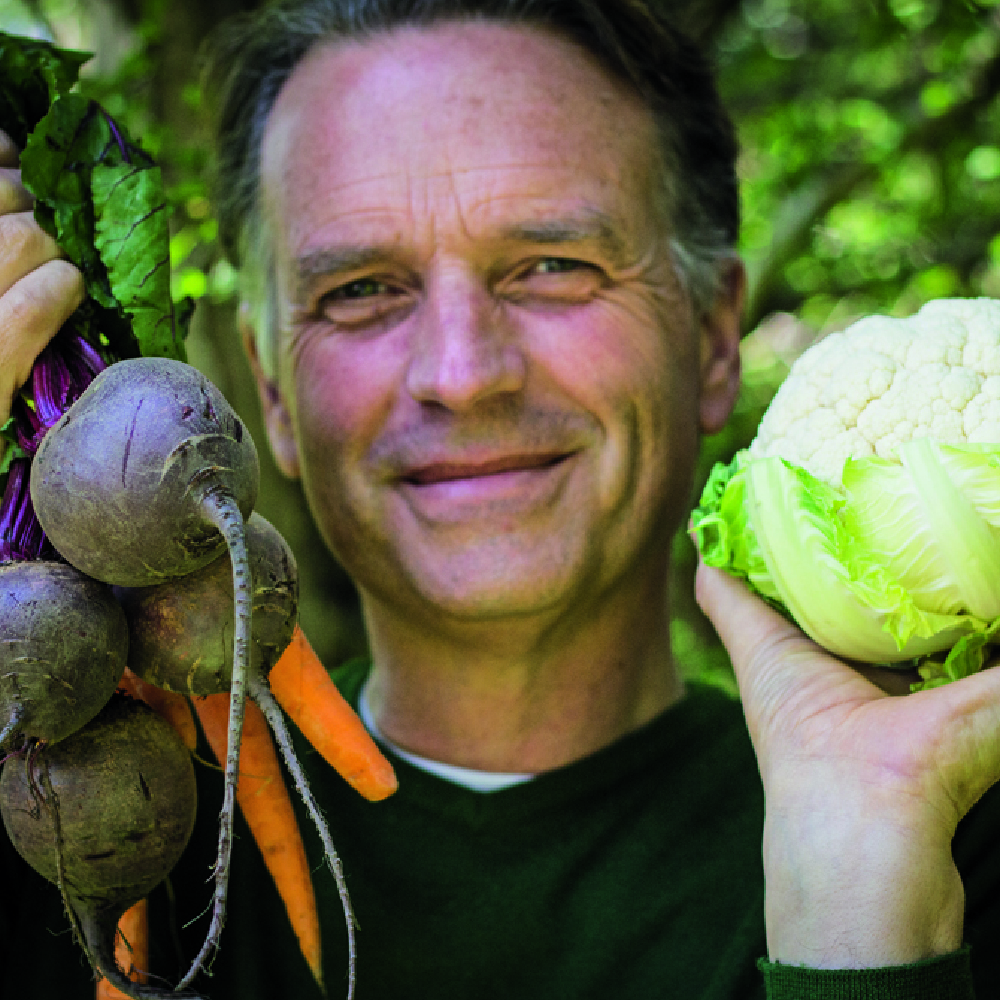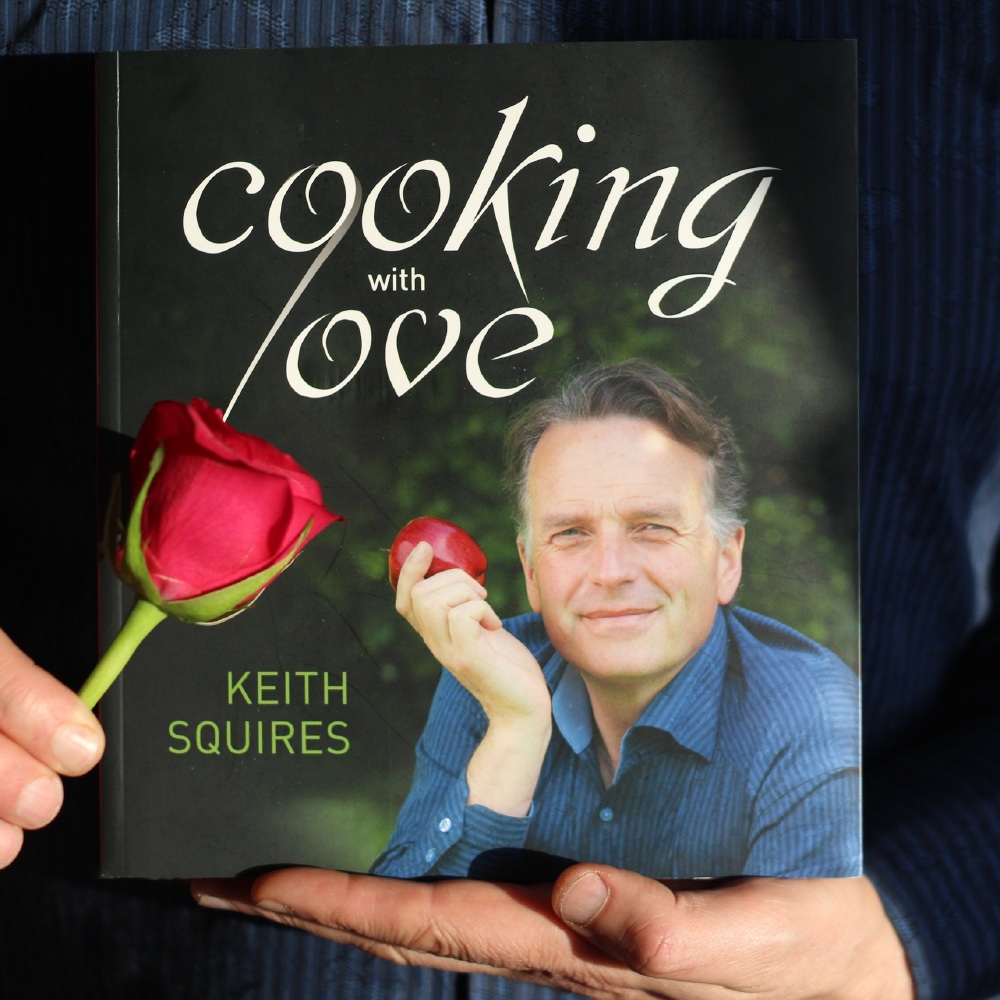Keith Squires is the go to vegetarian chef and author who has catered for 10,000's as the resident cook at the Dru Yoga Centre in Snowdonia.

Keith Squires
In connection with the launch of Cooking With Love his hardback glossy colour cook book Keith has noted below his top 7 easy tips explaining more about Ayurvedic principles.
Cooking with Love
Before I start cooking, I always try to create a good intention. I take a few moments to focus on my breathing and think about the people I'm cooking for. I ask myself to add love and light to the food. then I light a candle and play some uplifting music.
In this book the most important message is all in the title, ‘Cooking with Love'. Here I reveal everything you need to know about how to add that extra something to make your food unique and special. You'll also learn fascinating facts about the nutrition, history, mythology and legends of my favourite ingredients.
A meat-free meal basically requires replacing meat with vegetable protein. The best plant-based protein sources are pulses (beans and lentils), although many people tend to be a bit wary of them, thinking you have to be up all night soaking them. Yes, some beans do need soaking but you don't have to stand there watching them! in the Dru kitchen, we use mainly split pulses such as split lentils and split peas because they cook more quickly, or small pulses such as mung or adzuki beans.
Gut flora
Gut flora are very important. The right ones help create a healthy environment in your digestive tract. But the wrong gut flora hinder digestion. Undigested food creates toxins, no matter how healthily you eat.
Good gut flora are a bit like boy scouts or Girl Guides on ‘bob-a-Job Week'. Keen and helpful, they will tidy up your digestive tract and help repair it, always putting your needs before theirs. The bad bugs are more like unwelcome house guests who eat up all your nice food, create a mess and never clear up. Worst of all, they're hard to get rid of!
Fats : The Good the Bad and the Ugly
Knowing which fats and oils to eat (and which to avoid) has become ever more confusing with so many different opinions having been expressed over the last few decades.
I remember being told to eat margarine instead of butter. Then to avoid all saturated fats and to use refined, polyunsaturated fats instead. But now we're told that butter is better than margarine after all!
It might help to think of fats as the good, the bad and the ugly. Like the film of the same name, the good are not always well-behaved. The bad can sometimes be good, but the ugly can be relied on to be truly wicked!
Ayurveda
Ayurveda is an ancient medical system used alongside yoga to create health and wellbeing, so naturally I use a lot of Ayurvedic principles in my cooking. Some of these principles are quite simple, and just plain old common sense.
An Indian Ayurvedic doctor once told me most of the western people who come to him want complicated herbal remedies, diet lists or in-depth therapies— when most of the health problems he encounters are caused by people simply staying up too late, eating at the wrong time or eating in a hurry. ‘I make my living from Westerners who skip lunch!' he joked. With Ayurveda, you can benefit a lot by just getting the basics right first.
The Three Doshas
The idea of constitution types is not necessarily exclusive to Ayurveda. Indeed, traditional Chinese medicine has a similar system based on five elements: wood, fire, earth, metal and water. Until the 1800s, Western medicine was founded on the four humours, which originated in Greek and Roman philosophy.
All of these systems recognise that people are unique and have individual needs based on the balance of elements within them.
Know Thyself
Written in ancient Greek on the Apollo temple in Delphi, the dictum ‘know thyself' is also crucial in ayurvedic healing. An ayurvedic doctor can check your prakriti (ayurvedic type) from your pulse, or through vedic astrology. Alternatively you can estimate it with questionnaires and checklists.
When you are healthy and well-balanced, you are naturally attracted to the right foods and activities suited to your body type. However, when you are out of balance you will be attracted to the wrong foods and activities which make you worse.
A perfect ‘catch 22' situation!
Ayurveda and Yoga
The main aim of Ayurveda is to restore and maintain harmony in individuals so they can enjoy and offer their positive qualities to the world. Unfortunately modern life encourages us to rush around, travel and eat at irregular times, all of which upset the delicate balance within us. The good news is that yoga is the best way to balance all the constitution types. In fact it was designed to do just that! A good yoga session will have an activation and relaxation, a variety of postures and forward stretches balanced by backward bends. Yoga creates activity, but also inner stillness.

https://keithonfood.com

